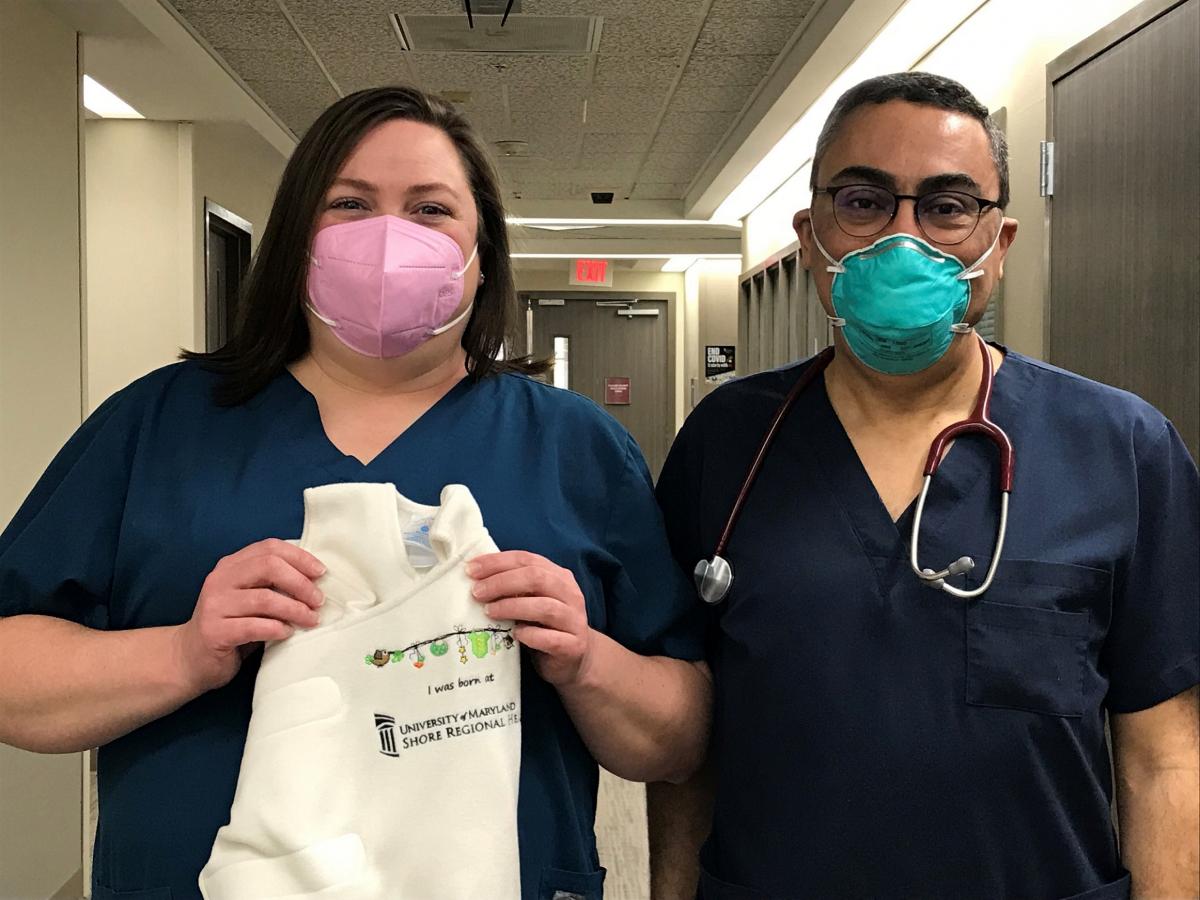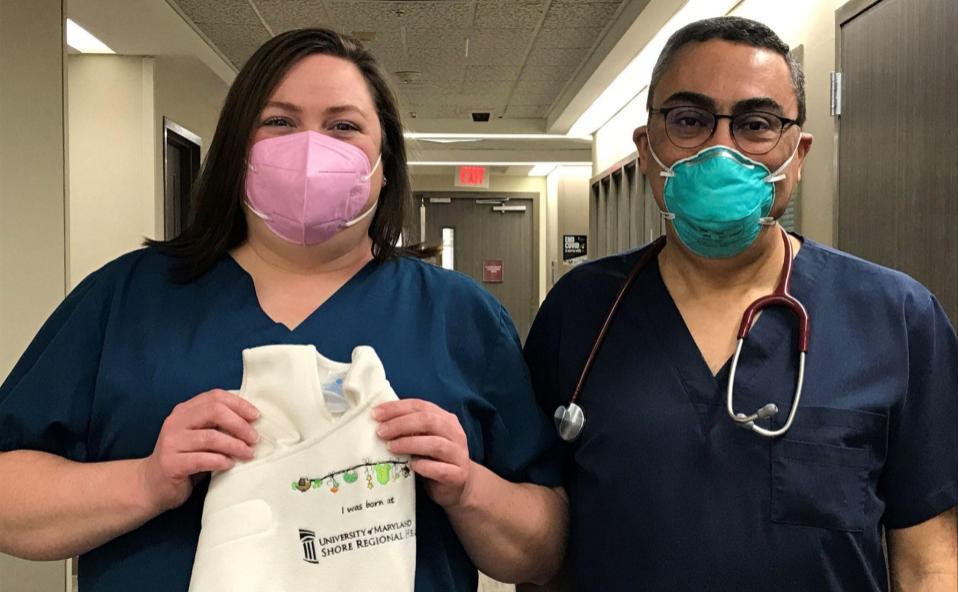
From left are Angie Wicks, Nurse Manager, Birthing Center at UM Shore Medical Center at Easton, and Ahmed Gawad, MD, Regional Department Chair, Pediatrics, UM Shore Regional Health. Wicks is holding a custom-designed HALO SleepSack, which is gifted to new families at time of discharge.
As part of an ongoing commitment to promote infant safe sleep practices, the Birthing Center at University of Maryland Shore Medical Center at Easton has adopted the HALO SleepSack in-hospital safe sleep modeling program.
“Each year in the United States, approximately 3,500 infants die from sleep-related deaths, many of which are preventable,” said Angie Wicks, Nurse Manager of the Birthing Center at UM Shore Medical Center at Easton.
The use of HALO’s in-hospital safe sleep modeling program allows the Birthing Center to replace loose hospital blankets with a free, wearable blanket called a SleepSack. Recommended by the American Academy of Pediatrics, the SleepSack is a swaddling blanket that helps babies sleep better because they stay warm as they cannot kick the blanket off. More importantly, the SleepSack wearable blanket eliminates the need for loose blankets that can cover a baby’s face and interfere with breathing, and also helps reduce the risk of overheating during nap time and bedtime.
HALO supports UM SRH’s in-hospital safe sleep modeling program by providing free SleepSack wearable blankets that are given to new families at time of discharge from the hospital. “Our goal is to increase the number of infants placed to sleep in a safe sleep environment by gifting our families with a SleepSack at discharge,” Wicks said.
As parents navigate their first few days as new parents in the hospital, Birthing Center team members model safe sleep practices by showing parents how to use the SleepSack and create a safe environment for their new baby once they go home.
According to Wicks, other infant safe sleep practices include lying baby down on his or her back to sleep, and never using soft bedding, such as loose blankets, bumpers, pillows, stuffed animals and positioners in baby’s sleep area. Babies could accidentally roll into these items, which could block their airflow. Bed-sharing with baby is also discouraged, including letting baby fall asleep on a couch, pillow or your chest or abdomen. Following these infant safe sleep practices can reduce the chance that baby could die of Sudden Infant Death Syndrome (SIDS). Babies who sleep on their backs, on a firm sleep surface, are less likely to die from SIDS. Keeping your baby’s crib in your room to make night-time feedings easier is OK.
About University of Maryland Shore Regional Health
As part of the University of Maryland Medical System (UMMS), University of Maryland Shore Regional Health is the principal provider of comprehensive health care services for more than 170,000 residents of Caroline, Dorchester, Kent, Queen Anne’s and Talbot counties on Maryland’s Eastern Shore. UM Shore Regional Health’s team of more than 2,200 employees, medical staff, board members and volunteers works with various community partners to fulfill the organization’s mission of Creating Healthier Communities Together.
About the University of Maryland Medical System
The University of Maryland Medical System (UMMS) is a university-based regional health care system focused on serving the health care needs of Maryland, bringing innovation, discovery and research to the care we provide and educating the state’s future physician and health care professionals through our partnership with the University of Maryland School of Medicine and the UM Schools of Nursing, Pharmacy, Social Work and Dentistry in Baltimore. As one of the largest private employers in the State, the health system’s 28,000 employees and 4,000 affiliated physicians provide primary and specialty care in more than 150 locations and at 12 hospitals. UMMS’ flagship academic campus, the University of Maryland Medical Center in Baltimore is partnered with the University of Maryland School of Medicine and is recognized regionally and nationally for excellence and innovation in specialized care. Our acute care and specialty rehabilitation hospitals serve urban, suburban and rural communities and are located in 13 counties across the State. For more information, visit www.umms.org.



Write a Letter to the Editor on this Article
We encourage readers to offer their point of view on this article by submitting the following form. Editing is sometimes necessary and is done at the discretion of the editorial staff.